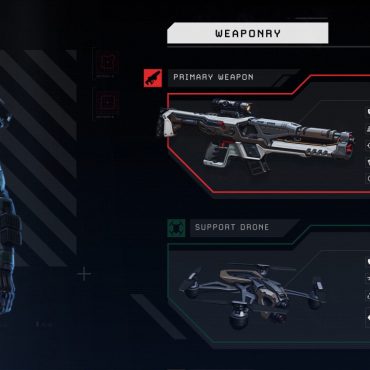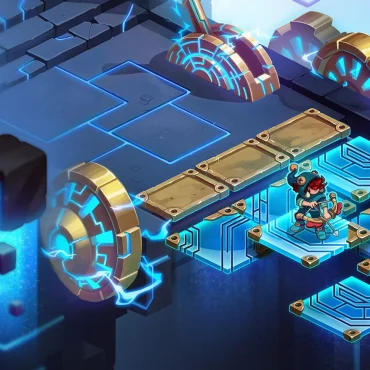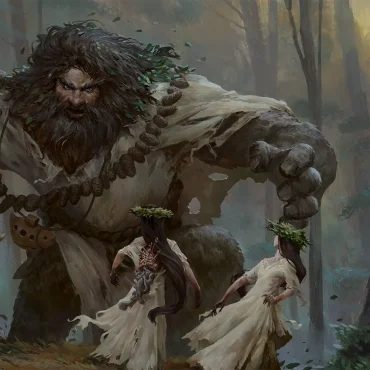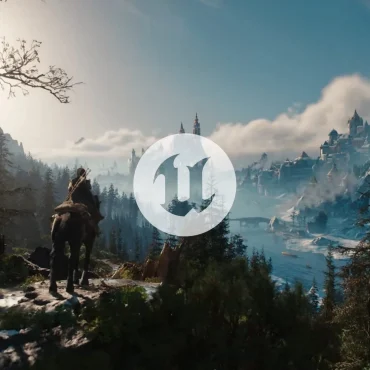Recently our sister company Wild Fields released a long-awaited game we have been working on – Speed Crew. So it is high time we shed some light on this game’s development process: how we came up with the pit crew co-op idea, how the initial concept has changed over time, why we believe live playtests are crucial, and more.
What is Speed Crew?
First, a brief introduction to the game if this is your first time hearing about it: Speed Crew is a cooperative party game in a car racing setting where you take on the duties of a pit crew. Your task is to quickly inspect incoming cars, perform various repairs while maneuvering between obstacles on challenging levels, and meet the time limit to defeat your fierce storyline rival. What to expect from Speed Crew:
- Cooperative gameplay for 1-4 players, with the ability to play online or on one console.
- 40+ levels with tricky navigation, traps, tools, and cars that your team must quickly repair.
- An exciting storyline where the main conflict revolves around anime and mustaches.
- Extensive character and vehicle customization options
- A game suitable for all ages and skill levels, with an emphasis on cooperation and teamwork.
How it all started
For a long time, N-iX Game & VR Studio’s leadership has been getting requests from the team to make their own game. As a game outsourcing company, we’ve been on the market for over 11 years and have worked on both indie titles and full-scale AAA projects (such as the recent Switchback VR). Therefore, it was logical to use the gained experience and try to develop our own game from start to finish.
We decided to launch the contest of game pitches, where every studio employee, regardless of specialization or experience, could offer their own idea for the game. We provided instructions on how and in what form to submit pitches:
- It had to be a small game. We did not seek external funding so that it would not affect our vision and workflow, and we immediately decided to cover the entire development and promotion of the game with our internal resources.
- Hotseat-focused. There was not enough competition in this segment of multiplayer games, and we believed that due to covid, isolation, and remote work, people lacked the socialization that a team game could provide.
- For the Nintendo Switch. We also initially targeted the Switch because it was the only console we weren’t proficient with, and we wanted to close this expertise gap. What’s more, the niche of hotseat games on this platform seemed the most attractive.
Very soon we received several cool ideas from completely different people. The best pitches were chosen by an internal jury of the team’s most experienced producers, and as a result of the first round, two concepts made it to the final: a chaotic city-builder and the Speed Crew concept itself. Then the second round took place, where the authors of these ideas answered additional questions and defended their pitches. As a result, the pitch by Andrii Panchenko, our UI/UX designer, won.

At the end of 2021, we approved with the company’s management what we were doing and how we were doing it, evaluated the project, and started thinking about when we would start. In January 2022, the process began to gain momentum.
Playtests were an integral part of the development
A large part of our game development was based on playtests. We didn’t want to make the game in a vacuum and rely only on our intuition. From the very beginning, we made prototypes and invited people who were not involved in the development to play.
Very often, these were people with completely different backgrounds: colleagues from the Game & VR department and the main N-iX, their friends and acquaintances, and generally anyone else. There were also people who had never played a video game or held a gamepad in their hands. Since the target audience of our game is as wide as possible, we tried to invite many different people to the playtests.
We promptly introduced them to the game mechanics and, together with the producers and game designers, watched them play and interact with the game. We monitored what they liked and what they didn’t like, what they wanted to do, and whether it worked or not. What we thought was working. We analyzed what we liked and what annoyed us. We tried to cultivate the things we liked and tried to reduce or correct the things that annoyed the players.
We prepared the first game prototype in July 2022 and organized an internal online playtest. Later, in August, we developed a stable version with levels and implemented the main mechanics. We held regular playtests throughout the fall and winter. Every Friday, people came to the office to play and shared their impressions of the game in a cozy atmosphere.

And so, from the very first stages of development to the very end (even a month before the gold version), playtests were an integral part of our workflow.
Less is more or what has changed from the original idea
We were guided by the main question – “Is it fun?” Everything that was not fun was cut out.
Initially, we had a lot of functional ideas for character controls. For example, at the initial stages of the game, different tools required different controls: if players used a drill, they had to hold down the button, if a wrench, they had to click the button for each turn. Different tools and situations required different controls and button interactions. We implemented all of this, but it turned out to be trivially inconvenient. People got confused, couldn’t remember what to do, and no matter how much they played, these features were more annoying than fun. So we gradually reduced and simplified the controls. As a result, we settled on a single function button that the character uses to perform an action, and it made it much more fun for players to play.
Also, earlier it was possible to completely disassemble and reassemble all the game elements of the car, regardless of whether there was damage or not. Players had to diagnose the car on a special computer and decide what needed to be repaired and what did not. It was even possible to avoid repairing a car with minor damage for one lap in order not to waste time and repair it on the next lap when the damage is more serious. There was a strong strategic aspect to this, as it would force the players to think and plan ahead and manage their time.
However, again, this turned out to be inconvenient, confusing for the players, and not fun. So we shifted the focus from strategy to more wild chaos and fun in co-op. Car diagnostics are still in the game, but now players can interact only with those elements of the car that require repair.
The not-fun category also includes the need to first drop one item to pick up another, a jack for each wheel and not the entire side of the car, replacing brake pads, which was the same as replacing a wheel but more difficult, and so on.
Most of these fixes occurred in the summer and fall, when we actively started conducting playtests and analyzing player feedback.
Passing the Nintendo Lotcheck
Passing the Nintendo Lotcheck was one of the main challenges in creating the game as it was our first experience.
The fact is that each console has its own game approval process aimed at checking whether the game meets the platform requirements. Lotcheck is a check by the Nintendo team, where the company itself tests your game. It checks for compliance with the console’s unique development guidelines and integration of native features, such as support for native controllers, file systems, and social activities, whether the correct button artwork is present, and whether the terminology is used correctly. To make sure your Nintendo Switch game the tutorial does not says “Press the Triangle.”
Each platform has very specific requirements for how to use its terminology. This check is very thorough, and it is very easy to make a mistake or forget to change something. In the case of even a minor bug, the tester will immediately report it to you and you will have to fix it. Many games do not pass certification on the first try.
The only advice we can add here is the following: scrupulously study the specifications of the chosen platform, play and analyze first-party Nintendo games (or other platforms you are targeting), and don’t be afraid to apply for a review when you are more or less sure of the build quality. You will get detailed feedback on what problem areas you should work on.
How the war affected the development
I don’t particularly want to mention it and there’s nothing specific to highlight, but since we started working on the game at the beginning of a full-scale war, it’s a must.
We faced all the same problems as most Ukrainians. Relocations, anxiety, running to bomb shelters, re-reading chats with instructions on what to do next. Later, blackouts became a new challenge. The team started going to the offices more often, as N-iX provided uninterrupted power supply for several days, water supply, internet, etc.
Initially, we planned 11 months of development, but it turned out to be 1.5 years, and the war played a significant role here.
However, we still managed to keep within the planned budget and reach the finish line. Our experience in outsourcing and a good initial assessment of the project by the producers and lead engineers, taking into account the project’s growth, possible risks, and force majeure, helped us do this. Of course, there were a lot of pitfalls that we didn’t take into account, but in general, the balance was maintained.
Creating Wild Fields and presenting the game
In order not to mix oil and water (outsourcing and indie development), the team that worked on the game formed a separate Wild Fields studio, which is now part of N-iX Game & VR Studio.
In March, members of our team who had the opportunity traveled to San Francisco to attend the Game Developers Conference (GDC). There we presented Speed Crew and everyone could play it. At the conference, the game received the GDC Best in Play award for its game trailer.

Then we went to Digital Dragons in Krakow, with the patched version of the game, where dozens of people were able to play with us again.

The next step for us was to release the demo version in May. We know that many indie developers are hesitant to release a demo before the release because they are afraid that players might not like the game and they will lose some of their audience at the release. However, after all the playtests and presentations, we were sure that after playing Speed Crew once, the player would want to play it more. Before the release, the demo was downloaded more than 12 thousand times, so this move has paid off.
Plans for the near future and beyond
Our nearest plans include a PC port of the game. There is already a demo version on the game’s Steam page, and the full release will appear soon. The next step is a release on Xbox and PlayStation, which we have already started working on, and regular updates and new content. We have a lot of ideas for additional content, so it all depends on the players’ feedback.
If you want to support our team and the game, you can play Speed Crew on the Nintendo Store now, or if you’re a PC gamer, add it to your wishlist or play the demo on Steam.




